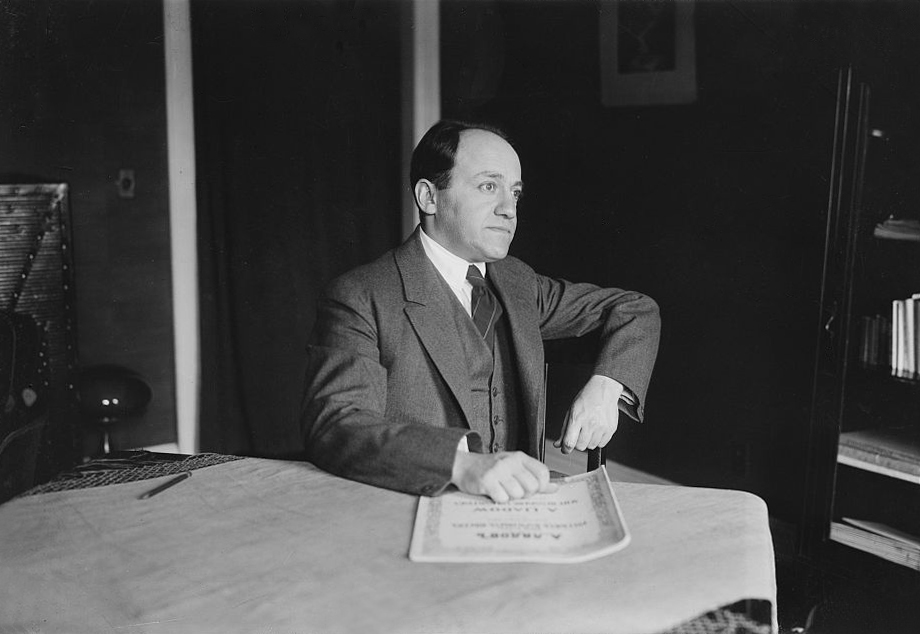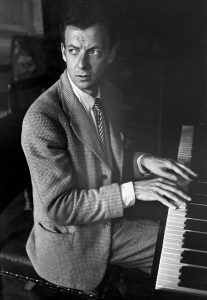
Ernest Bloch: A Once-Influential Force
Cellist Oliver Herbert’s beguiling performance of the Canzona from Ernest Bloch’s rarely heard Suite No. 1 from 1956 raises an interesting question: How could the music of a 20th-century composer, celebrated by critics and influential to his peers have faded so quickly from the standard repertoire? That’s the enigma of Ernest Bloch (1880-1959). Consider that in 1938, the distinguished musicologist and critic Ernest Newman wrote, “…it must surely have been evident to every intelligent listener on Thursday that the man who could write ‘Schelomo’ is both imaginatively and technically in a place by himself in contemporary music.”
The man of the Hour

In writing so unreservedly, Newman wasn’t lauding Bartok for his Music for Strings Percussion and Celesta of 1936, Stravinsky for his 1913 revolutionary Rite of Spring, or even Schoenberg for his Transfigured Night of 1899. The man of the hour for Newman in 1938 was Ernest Bloch. One might anticipate enduring fame to follow such lofty praise from a famously erudite source. But Bloch remains in relative obscurity despite the effusive contemporary reviews of critics like Newman.
Performances of Bloch’s sacred choral work, Avodath Hakodesh, are rare. His chamber music is seldom programmed. From Jewish Life, a set of three short pieces for cello and piano written by Bloch in 1924, occasionally find their way onto concert programs. Baal Shem: Three Pictures of Chassidic Life, written for violin and orchestra, is frequently heard on violin recitals and in religious services, but almost always with piano substituting for orchestra. Bloch’s Concerto Grosso No. 1 is played most often by training ensembles.
Hiding in Plain Sight
Best known to modern audiences is Bloch’s Schelomo, Rhapsodie Hébraïque for violoncello and orchestra, composed in 1915. Schelomo has become a standard in the cello canon and is routinely played by orchestras and famous cello soloists worldwide. But considering Bloch’s reputation in his lifetime and extensive output, he is generally underappreciated and too seldom programmed today. The Bloch oeuvre includes fourteen symphonic pieces, thirteen symphonic concerti, three full-scale choral pieces, the three-act opera Macbeth, eleven string quartets, and three dozen other works. Bloch’s influence on the composers who followed him is barely known and deserves more research and recognition.
Comparing Notes

The Canzona from Bloch’s 1956 Suite No. 1 for solo cello is an example. Bloch wrote the piece for the great cellist Zara Nelsova, who premiered it in London in 1957. The mood and tonality of the Bloch Canzona compares interestingly with the Canto Primo of Britten’s Suite No. 1 for the same instrument. Britten and Nelsova were frequently concertizing in London in the years when the cellist was championing Bloch’s works. As Britten began to compose his cello suite No. 1 for Rostropovich in 1964, he would have been aware of Bloch’s Suite No. 1, which had been premiered in London just seven years earlier. Britten’s Suite No. 1 has no direct quote from Bloch’s Suite No. 1, but the earlier work seems to have influenced Britten consciously or unconsciously.

Britten’s Suite No. 1 is a masterpiece of haunting originality. But composers often owe a debt to those before them who forged the paths from which new ideas could spring. Britten may owe some of that debt to Bloch in this instance.
Bloch and Britten were both admired by musicians, but neither was as successful as some of their more famous contemporaries such as Stravinsky, Copland, and Schoenberg. Posthumous reception has favored Britten, whose reputation has grown since his untimely passing in 1976. Bloch, on the other hand, has been largely forgotten since his death in 1959. Bloch’s music deserves more attention than it receives, even if Ernest Newman’s 1938 characterization does seem over the top.
Gone and all but Forgotten
Programming more of Bloch’s powerful and skillfully-wrought music promises to reveal more of Bloch’s influence on the musical landscape of the 20th century. Oliver Herbert’s performance of the Canzona of Suite No. 1, recorded at Guarneri Hall in the summer of 2021, is a great place to start. Let’s hope our current generation of performers and presenters are open to the challenge.

